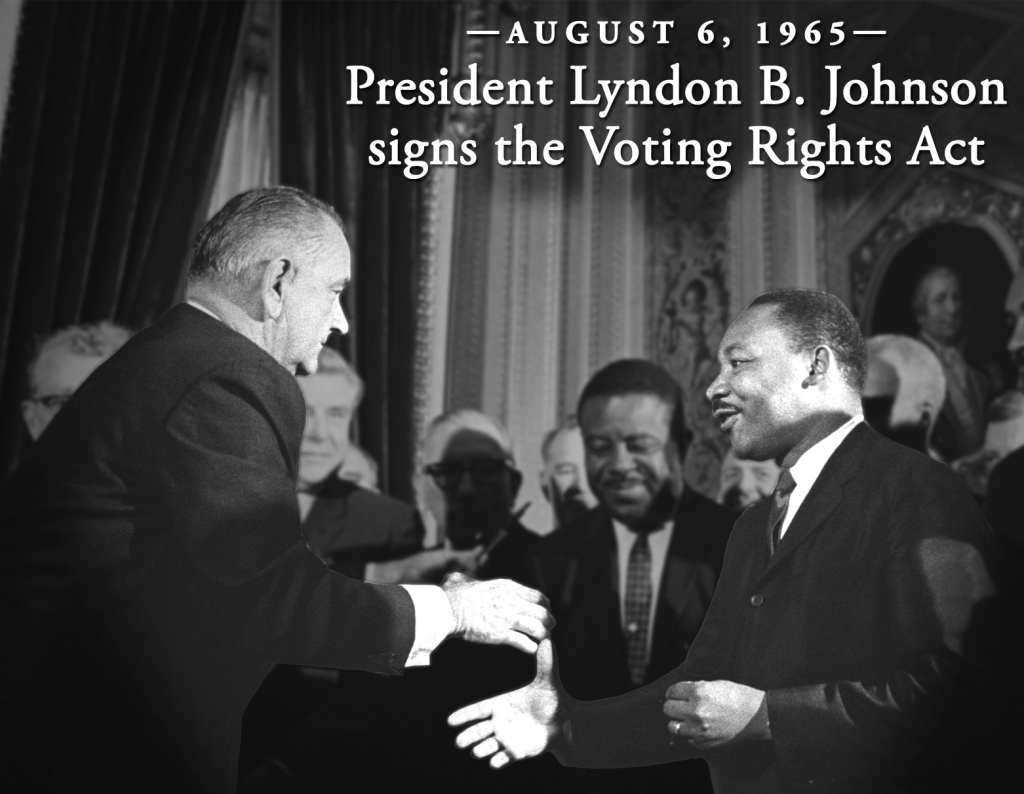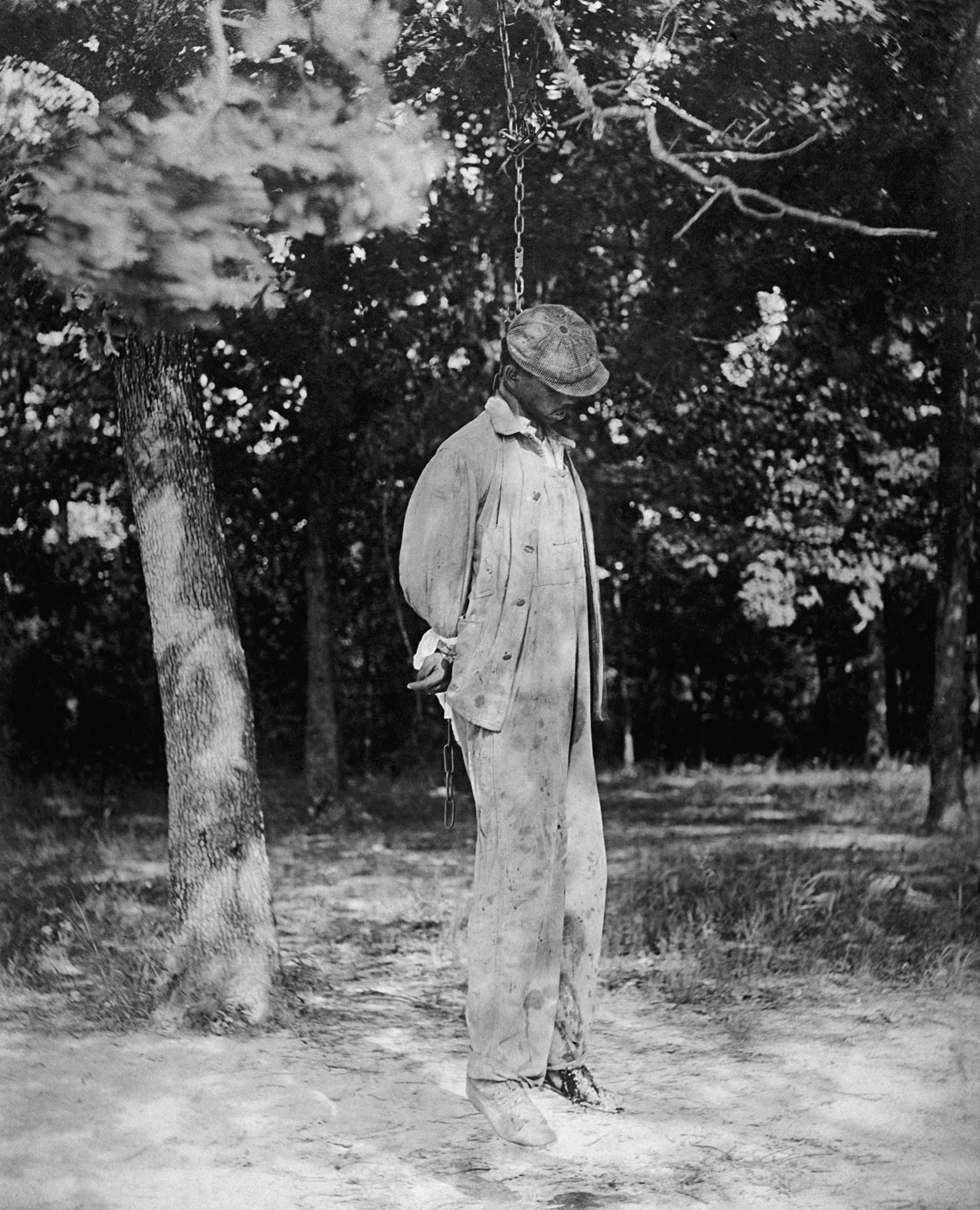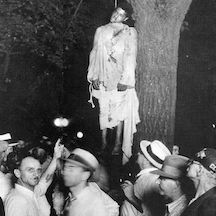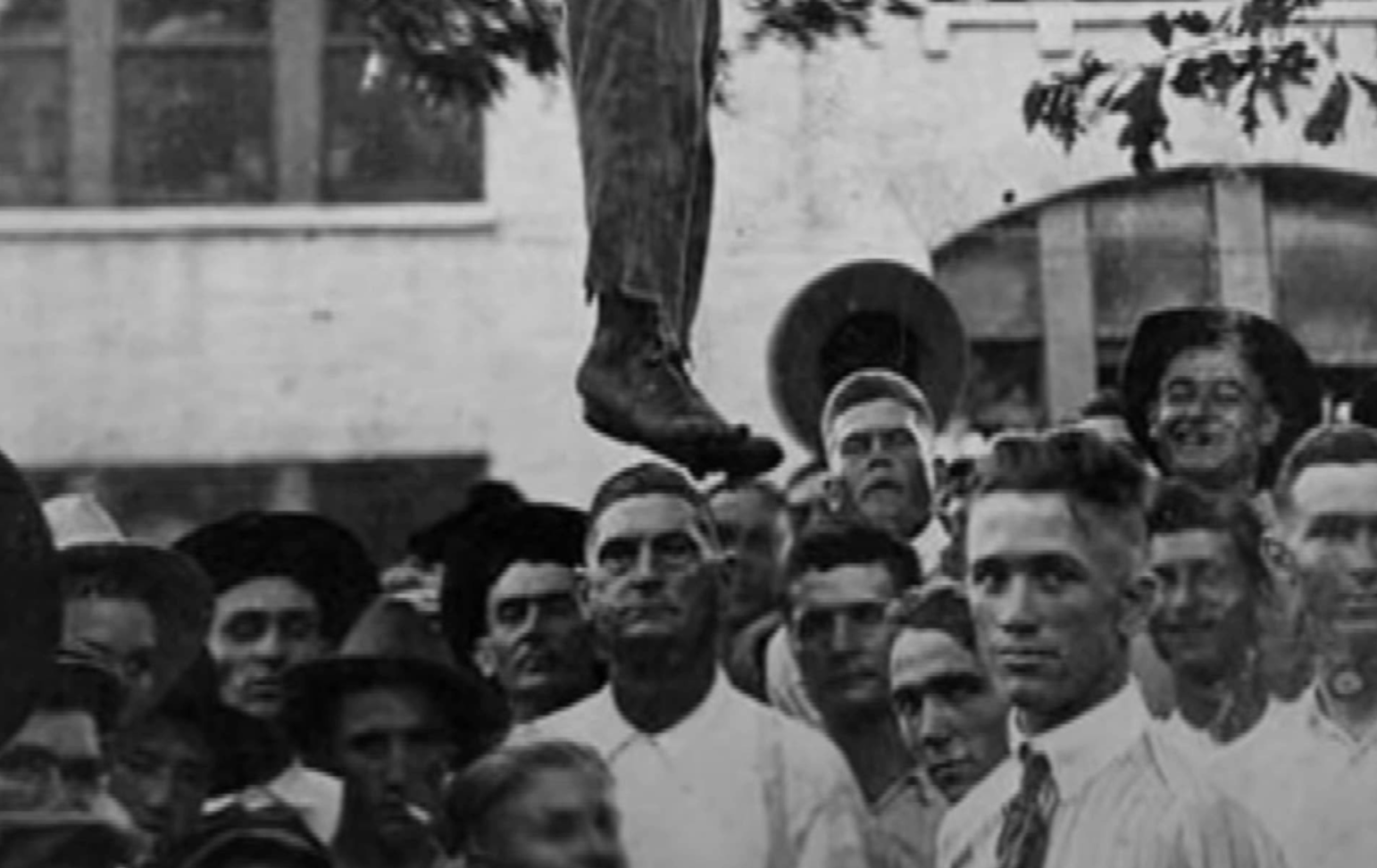The History of Voting Rights in America: Progress, Setbacks, and the Fight for Equality
The right to vote is the foundation of any democracy, but in the United States, it hasn’t always been granted equally. The history of voting rights in the U.S. is one of struggle, progress, and setbacks. While there have been key victories that expanded access to the ballot, ongoing efforts to suppress votes show that democracy is at risk of being taken away completely. To understand the role voting rights has in building a strong democracy, we need to look at how voting rights were defined in the nation’s early days and how they have evolved over the last two and a half centuries.
The Early Republic: Voting for the Few
At the founding of the United States, voting rights were extremely limited. Most states restricted the right to vote to:
- White men
- Property owners
- Those who paid taxes
This meant that women, Black people, Native Americans, and many working-class white men were excluded from the democratic process.
Expanding the Electorate in the 19th Century
The first major expansion of voting rights occurred in the early 1800s, as most states eliminated property requirements, allowing all white men to vote. However, racial and gender barriers remained firmly in place.
The 15th Amendment (1870): A Victory for Black Men—But with Limits
Following the Civil War, the 15th Amendment was passed, stating that the right to vote could not be denied based on “race, color, or previous condition of servitude.” This was a major victory for Black men, particularly in the South, where they briefly held political power during Reconstruction.
However, in opposition to Reconstruction, Southern states passed laws to effectively disenfranchise Black voters. These included:
- Poll taxes – Fees required to vote, which many Black and poor white citizens couldn’t afford.
- Literacy tests – Unfair exams designed to prevent Black citizens from voting.
- Grandfather clauses – Laws that allowed only those whose ancestors had voted before the Civil War to bypass literacy tests, effectively excluding Black voters.
By the early 1900s, Black voter participation in the South had plummeted.
Women’s Suffrage: The 19th Amendment (1920)
Women fought for decades for the right to vote, and in 1920, the 19th Amendment was ratified, finally granting women the right to vote nationwide. However, many Black, Native American, Asian, and Latina women still faced barriers due to racist state laws.
The History of Oppression: Lynchings, the KKK, and Voter Suppression
For Black Americans, the fight for voting rights has been intertwined with a history of terror and systemic oppression. After the Civil War, the 15th Amendment granted Black men the right to vote, but Southern states quickly implemented laws and practices designed to prevent Black Americans from exercising that right. The rise of white supremacy groups like the Ku Klux Klan (KKK) added a violent layer to this oppression. These groups used intimidation, threats, and outright murder to suppress Black voting power.
One of the most horrific examples of this violence was the practice of lynching, where Black men, women, and children were murdered by white mobs, often with the complicity of local authorities. White people would pose for photos with the mutilated bodies of their victims, celebrating these atrocities as a means of instilling fear and maintaining control over Black communities. These images serve as stark reminders of how Black Americans were terrorized in their fight for equality.
Lynchings were not only a tool of racial terror; they were used to enforce social and political control. The fear of being killed or maimed for attempting to vote kept many Black Americans from even considering challenging the oppressive systems in place.
In 1946, Maceo Snipes, a Black World War II veteran in the small town of Hancock, Georgia, defied the racial norms of the time by voting in a Democratic primary election. His decision to cast his ballot was an act of defiance against the deeply entrenched system of racial segregation that had long kept Black Americans from voting in the South.
After he voted, Snipes was relentlessly pursued by white supremacists who were determined to make an example of him. Just days later, a group of white men, including local police officers, brutally shot Maceo Snipes outside his home. They dragged his body through the streets, terrorizing the Black community in Hancock. His murder was a chilling reminder of the violent lengths to which white supremacists would go to prevent Black Americans from exercising their constitutional right to vote. Despite the evidence, no one was convicted of Snipes’ killing, and his death remains a stark example of the deadly consequences of voter suppression during the Jim Crow era.
The KKK and other white supremacist groups also engaged in voter intimidation, threatening to kill or harm Black voters who attempted to register or cast ballots. These tactics made voting a dangerous and often impossible act for Black Americans, especially in the South.
The Voting Rights Act of 1965: A Landmark Achievement
The civil rights movement of the 1950s and 1960s brought renewed attention to voter suppression, particularly in the South. In response to years of activism—including protests, lawsuits, and violent backlash—the federal government passed the Voting Rights Act of 1965 (VRA). The VRA was a monumental achievement in the battle for racial equality in America. It:
- Banned literacy tests and other discriminatory voting practices designed to disenfranchise Black voters.
- Required states with histories of discrimination to get federal approval before changing voting laws (preclearance).
- Led to a dramatic increase in Black voter participation, as well as greater representation for African Americans in elected offices.
The Voting Rights Act was one of the most significant civil rights victories in U.S. history, representing a turning point where the federal government took decisive action to protect the right to vote for Black Americans.

However, even with this landmark achievement, the battle for voting rights did not end, as efforts to suppress votes continued in various forms.
The violent history of disenfranchisement, particularly for Black Americans, shows the lengths to which powerful forces have gone to deny people their fundamental rights. Recognizing this history is essential to understanding the importance of protecting voting rights and ensuring that every citizen has an equal opportunity to participate in the democratic process.
Recent Rollbacks: The Supreme Court Weakens the Voting Rights Act—Twice
In the years following the passage of the VRA, the federal government and civil rights organizations worked tirelessly to combat discriminatory practices, but the deep-seated legacies of racism and oppression continue to affect the political process.
Two recent Supreme Court rulings have drastically weakened its protections:
- Shelby County v. Holder (2013): Struck down the preclearance requirement, allowing states to pass new voting restrictions without federal oversight. This led to a wave of voter suppression laws, including strict voter ID requirements and polling place closures in Black and Latino communities.
- Brnovich v. Democratic National Committee (2021): Made it harder to challenge voter suppression laws by weakening protections against discriminatory voting rules.
Ongoing Battles for Voting Rights
Today, voting rights remain under attack through:
- Voter ID laws that disproportionately affect minorities, the elderly, and low-income voters.
- Voter purges that remove eligible voters from registration lists.
- Gerrymandering that dilutes the power of certain voting groups.
- Restrictions on early voting and mail-in ballots that make it harder for working people to vote.
How Voter Suppression Threatens Democracy: Tactics, Consequences, and Solutions
In a true democracy, every eligible citizen should have an equal opportunity to vote. However, across the United States, voter suppression tactics are making it harder for certain groups—especially minorities, low-income individuals, and young voters—to cast their ballots. The motivation behind these tactics is often partisan politics. When one party gains power, voter suppression can be used to maintain and strengthen that party’s control. Without voter suppression, political parties must adjust to win over voters. Voter suppression allows a political party to disregard the will of the people and hold onto power, regardless of the electorate’s desires. This goes against the core values our country was founded on. These intentional barriers to voting undermine democracy and distort the will of the people.
Tactics of Voter Suppression
Voter suppression tactics are designed to sound like reasonable laws in the name of “election integrity”. That’s not the reason behind these tactics. Some of the most common and damaging voter suppression tactics include:
- Strict Voter ID Laws – Many states require specific forms of identification that disproportionately impact those without driver’s licenses, such as low-income voters, the elderly, and people of color.
- Voter Purges – States remove voters from registration rolls under the guise of maintaining “clean” lists, but often, eligible voters—especially in minority communities—are wrongly purged.
- Polling Place Closures – Reducing the number of polling stations in certain areas leads to long lines, making voting inaccessible for those with jobs, disabilities, or transportation challenges.
- Limited Early and Mail-In Voting – Cutting back early voting days and restricting absentee ballots disproportionately affects working-class Americans and voters in rural areas.
- Gerrymandering – By drawing district lines to favor one political party, lawmakers dilute the voting power of certain communities, ensuring that elections are decided before a single vote is cast.
- Felony Disenfranchisement – Millions of Americans who have served their time remain barred from voting, a policy that disproportionately impacts Black and Latino communities.
Consequences of Voter Suppression
The effects of voter suppression are devastating for democracy:
- Entrenchment of Political Power – When politicians manipulate voting rules, they secure their own power rather than being held accountable by the people.
- Disenfranchisement of Millions – When barriers to voting are erected, fewer people participate in elections, skewing results in favor of those in power.
- Erosion of Trust in Elections – Suppression tactics create an uneven playing field, leading to skepticism about the legitimacy of election outcomes.
- Disproportionate Impact on Marginalized Communities – Voter suppression disproportionately affects racial minorities, young people, and low-income individuals, perpetuating systemic inequalities.
Consequences for Voting Rights and Democracy
Collectively, these decisions have had a chilling effect on voting rights across the country:
- Proliferation of Restrictive Laws: Freed from preclearance requirements, several states have enacted laws that impose strict ID requirements, reduce early voting periods, and purge voter rolls. These measures often disproportionately impact communities of color, the elderly, and low-income voters.
- Increased Litigation: With diminished federal oversight, protecting voting rights has shifted to the courts, resulting in prolonged legal battles that strain resources and create uncertainty around elections.
- Erosion of Public Trust: Perceptions of voter suppression and the weakening of protective legislation contribute to declining trust in the electoral process, which is detrimental to democratic participation.
The Global Perspective: How the U.S. Compares to Other Democracies on Voting Rights
The United States prides itself on being a leading democracy, yet when it comes to voting rights, it lags behind many other democratic nations. Barriers such as voter ID laws, felony disenfranchisement, and limited access to voting stand in stark contrast to policies in other democracies that prioritize accessibility and participation. By comparing the U.S. to other nations, we can see where America falls short—and what can be done to strengthen its democracy.
Voter Turnout: The U.S. Struggles to Compete
One of the clearest indicators of a healthy democracy is voter turnout. Compared to other developed nations, the U.S. consistently ranks near the bottom in voter participation.
- In the 2020 U.S. presidential election, voter turnout was 66.8%, one of the highest in recent history but still below many other democracies.
- In contrast, Belgium (77.2%), Sweden (82.1%), and Denmark (80.3%) regularly achieve far higher voter participation rates.
- Even Canada (76.6%) and Germany (76.6%) consistently surpass the U.S. in turnout.
Voter Registration: The U.S. Makes It Harder to Participate
Unlike many democracies where the government automatically registers eligible citizens to vote, the U.S. places the burden on individuals to register—often facing complex deadlines and bureaucratic hurdles.
Automatic Voter Registration (AVR) in Other Democracies
- Sweden, Germany, and Canada automatically register all eligible citizens, making voter participation easier and more accessible.
- Australia uses a mix of automatic registration and aggressive outreach to ensure participation.
- The United States, by contrast, relies on a patchwork of state-by-state systems, often requiring voters to take extra steps to register.
Same-Day Registration
Many countries and some U.S. states allow voters to register on Election Day itself, making the process more inclusive.
- Canada, Switzerland, and Finland allow same-day registration.
- 21 U.S. states plus Washington, D.C. offer same-day registration, but others still impose strict deadlines that discourage participation.
Voting Access: The U.S. Puts More Obstacles in the Way
Voting should be simple and accessible, yet in the U.S., long lines, strict voter ID laws, and limited polling places create barriers that do not exist in many other democracies.
Mail-in and Early Voting
- Sweden, Germany, and Switzerland allow voters to cast ballots weeks in advance or vote by mail without requiring an excuse.
- The United States, despite recent expansions, still has some states requiring voters to provide a reason for requesting a mail-in ballot.
Election Day as a Holiday
Many democracies recognize the importance of voting by making Election Day a holiday or holding elections on weekends.
- France, Germany, Canada, and Australia all vote on weekends to maximize turnout.
- The United States holds elections on a Tuesday, which disproportionately affects working-class and low-income voters who may struggle to get time off.
Felony Disenfranchisement: The U.S. Stands Alone
One of the biggest voting rights failures in the U.S. is the disenfranchisement of millions of people with felony convictions. The U.S. is one of the few democracies that severely restricts the right to vote for those with criminal records.
- Most European countries, including Germany, France, and the Netherlands, allow prisoners to vote, recognizing voting as a fundamental right.
- Canada and South Africa also permit incarcerated individuals to vote.
- The United States disenfranchises over 4.6 million Americans, disproportionately affecting Black and Latino communities.
Gerrymandering: A Uniquely American Problem
While gerrymandering—the manipulation of electoral district boundaries for political advantage—exists in some democracies, few nations allow it to the extent that the U.S. does.
- Independent commissions draw electoral boundaries in Canada, the UK, and Australia, ensuring fair representation.
- The U.S. allows partisan state legislatures to control redistricting, leading to heavily gerrymandered districts that favor one party and undermine democratic fairness.
Compulsory Voting: Should the U.S. Consider It?
Some democracies go even further by making voting a legal requirement, ensuring high participation.
- Australia has compulsory voting, with turnout rates consistently above 90%. Failing to vote results in a fine.
- Belgium and Brazil also enforce voting, recognizing it as both a right and a civic duty.
What the U.S. Can Learn
To strengthen democracy and increase voter participation, the U.S. could adopt policies that have proven successful in other democracies:
- Automatic Voter Registration (AVR) to simplify the registration process.
- Same-day registration in all states to reduce bureaucratic barriers.
- Universal mail-in voting and expanded early voting to make voting more accessible.
- Making Election Day a national holiday or moving elections to weekends to encourage turnout.
- Restoring voting rights to formerly incarcerated individuals, aligning the U.S. with democratic norms.
- Ending gerrymandering by implementing independent redistricting commissions
The Myth of Voter Fraud: How False Claims Are Used to Justify Voter Suppression
Voter fraud is one of the most persistent myths in American politics. Despite repeated investigations and studies showing that voter fraud is exceedingly rare, false claims about widespread cheating continue to be used as justification for restrictive voting laws. These laws disproportionately impact marginalized communities, making it harder for many Americans to vote. By examining the facts, the consequences, and the motivations behind these claims, it becomes clear that the myth of voter fraud is a tool for voter suppression rather than a genuine threat to democracy.
The Reality: Voter Fraud Is Extremely Rare (For Now)
Extensive research and bipartisan investigations have found that actual instances of voter fraud in the U.S. are nearly nonexistent.
- A comprehensive study by the Brennan Center for Justice found that the rate of voter fraud is between 0.0003% and 0.0025%—so rare that a person is more likely to be struck by lightning than to commit voter fraud.
- A 2016 study examined one billion ballots cast between 2000 and 2014 and found only 31 credible cases of voter impersonation.
- Even Donald Trump’s own voter fraud commission, established in 2017, found no evidence of widespread fraud before being disbanded in 2018.
Yet, despite this overwhelming evidence, false claims about voter fraud persist—often fueled by political rhetoric and misinformation.
How the Myth Is Used to Justify Voter Suppression
While voter fraud is virtually nonexistent, laws designed to “prevent” it disproportionately restrict access to voting, particularly for marginalized communities. Here’s how:
1. Voter ID Laws
Many states require strict voter identification, even though voter impersonation is almost nonexistent.
- These laws disproportionately impact low-income individuals, elderly voters, and communities of color, who are less likely to have government-issued IDs.
- 11% of U.S. citizens (over 21 million people) lack a government-issued ID.
- In states like Texas, a gun license is an acceptable form of ID, but a student ID is not—a clear attempt to target younger, more progressive-leaning voters.
2. Purging Voter Rolls
Election officials in some states remove voters from registration lists under the guise of preventing fraud.
- Georgia’s “exact match” law has purged thousands of eligible voters for minor discrepancies, such as a missing hyphen in a name.
- In Ohio, a voter who skips voting in a few elections can be removed from the rolls without their knowledge.
- A 2018 study found that Black voters were purged at a significantly higher rate than white voters.
- States removed more than 19 million people from voter rolls between the 2020 and 2022 electoral cycles that prevent many eligible persons from exercising their right to vote.
3. Restrictions on Mail-in Voting
After record turnout in the 2020 election, many states restricted mail-in voting under the false premise of preventing fraud.
- Georgia, Florida, and Texas passed laws limiting access to mail-in ballots, despite no evidence that mail voting leads to fraud.
- Some states have banned ballot drop boxes or criminalized assisting voters with returning their ballots, making it harder for the elderly and disabled to vote.
4. Limiting Early Voting & Closing Polling Places
Many states have reduced early voting days and closed polling places in minority communities, leading to long lines and suppressed turnout.
- A 2019 study found that counties with higher Black populations had fewer polling places per voter, causing longer wait times.
- In some areas of Arizona, Georgia, and Texas, voters waited up to 8 hours to cast a ballot in the 2020 election.
The Real Motivation: Suppressing the Vote
If voter fraud isn’t a real problem, why do politicians keep pushing restrictive laws? The answer is simple: these laws disproportionately impact voters who are more likely to support progressive candidates.
- Studies show that voter ID laws reduce turnout among Black, Latino, and young voters—demographics that tend to lean Democratic.
- A Republican lawyer admitted in 2020 that strict voting laws “give Republicans a competitive advantage in elections.”
- Donald Trump openly stated in 2020 that “if you had universal mail-in voting, you’d never have a Republican elected in this country again.”
This isn’t about fraud—it’s about keeping power by making it harder for certain groups to vote.
The Consequences: A Weak Democracy at Risk of Becoming an Autocracy
By restricting access to the ballot box, voter suppression laws undermine the fundamental principles of democracy. The results?
- Lower voter turnout: The U.S. already has one of the lowest voter participation rates among developed nations, and these laws make it worse.
- Disenfranchised communities: Black, Latino, Indigenous, low-income, elderly, and disabled voters face greater obstacles in exercising their rights.
- Mistrust in elections: When voters believe the system is rigged against them, they become disillusioned and disengaged.
Why Automatic Voter Registration is Essential for a Healthy Democracy
In a country that prides itself on free and fair elections, the burden of registering to vote still falls on individuals rather than being an automatic process. Automatic Voter Registration (AVR) is a simple, proven solution that increases voter participation, reduces errors, and enhances election security. By making registration seamless, the U.S. can take a major step toward ensuring that every eligible citizen has an equal voice in democracy.
Automatic Voter Registration is a system where eligible citizens are automatically registered to vote when they interact with government agencies, such as the Department of Motor Vehicles (DMV) or social services. Instead of requiring individuals to opt-in via a high-friction process designed to weed out voters, AVR shifts the process to an opt-out system, meaning people are registered unless they choose not to be.
Why the U.S. Needs Automatic Voter Registration
1. It Increases Voter Participation
One of the biggest barriers to voting is registration. Many Americans don’t register because they miss deadlines, don’t know the process, or move frequently. AVR dramatically increases voter registration and participation:
- Oregon saw a 94% increase in registrations through the DMV in the first year after adopting AVR.
- In Georgia, AVR helped add over one million voters to the rolls between 2016 and 2020.
- States with AVR consistently have higher voter turnout rates than those without it.
By making registration effortless, AVR ensures more people are included in the democratic process.
2. It Reduces Registration Errors
Manual voter registration is prone to errors due to misentered data, missing information, and outdated records. AVR eliminates many of these problems by using official government data to register voters accurately.
- In states with AVR, election officials report fewer registration errors and cleaner voter rolls.
- A study by the Brennan Center found that automatic registration reduces duplicate records and incorrect information, improving the integrity of elections.
- Fewer errors mean fewer rejected ballots and less confusion on Election Day.
3. It Saves Time and Money
AVR is not only good for democracy but also for government efficiency.
- Processing voter registrations manually costs states millions of dollars each election cycle.
- With AVR, states save money by reducing paperwork, streamlining voter list maintenance, and cutting down on provisional ballots caused by registration errors.
- Election officials can focus on running fair elections rather than processing mountains of paperwork.
4. It Strengthens Election Security
Opponents of AVR often claim it opens the door to fraud, but the reality is the opposite. AVR strengthens election security by keeping voter rolls accurate and up to date.
- When voters move, AVR automatically updates their registration, reducing outdated or duplicate entries.
- Because AVR pulls data directly from government agencies, it prevents fraudulent registrations, unlike outdated paper-based systems.
- Election security experts agree that automatic registration makes elections safer, not weaker.
5. It Reduces Voter Suppression
Voter suppression tactics often target registration. Strict voter ID laws, registration purges, and arbitrary deadlines disproportionately affect marginalized communities. AVR eliminates many of these barriers by ensuring:
- Low-income voters and people of color, who are less likely to be registered, are automatically included.
- Young voters, who often forget to register, are signed up when they get a driver’s license.
- Disabled and elderly voters don’t have to navigate complex registration rules.
By removing unnecessary obstacles, AVR makes democracy more accessible to all Americans.
Common Arguments Against AVR—and Why They’re Wrong
1. “People should take personal responsibility for registering.”
Democracy functions best when participation is easy. No one should be denied their right to vote because of bureaucratic red tape.
2. “It will lead to voter fraud.”
There is no evidence that AVR leads to voter fraud. In fact, AVR makes elections more secure by keeping voter rolls up to date.
3. “It’s too expensive.”
AVR actually saves money by reducing paperwork, improving efficiency, and lowering the cost of maintaining voter rolls.
The Path Forward: Restoring and Protecting Voting Rights
To counteract these setbacks, some measures can be pursued, but the true protection for voting needs to be enshrined in the Constitution:
- State-Level Protections: States can proactively pass their own voting rights protections to ensure fair access to the ballot, independent of federal mandates.
- Public Advocacy and Education: Grassroots movements and civic organizations play a crucial role in raising awareness, mobilizing voters, and advocating for policies that promote equitable voting practices.
The integrity of democracy hinges on the ability of all citizens to participate freely and fairly in elections. Addressing the challenges p
American democracy is at risk, and that’s not an exaggeration. By the time you read this, it could already be slipping away. Restoring democracy requires the people to stand up and reclaim the power that has been taken from them. Both the Declaration of Independence and the Constitution make clear that the people hold power, not politicians. While politicians may seize power temporarily, as they have throughout history, it is ultimately the people’s right and responsibility to take it back. When they do, voting rights must be a core part of the Constitution to prevent future threats to democracy. Democracy only erodes when the people become complacent. The 1965 Voting Rights Act was an important victory, but it was not a permanent one because it was not enshrined in the Constitution. To ensure lasting protection, voting rights must be firmly embedded in our Constitution.




Leave a Reply